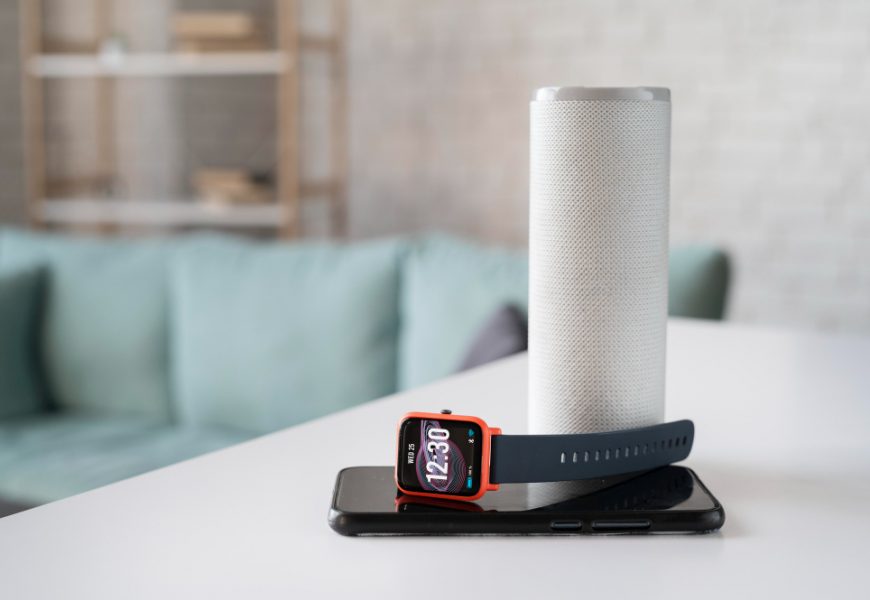Reinventing Convenience Through Emerging Personal Technologies: How the Next Wave of Everyday Gadgets Will Redefine Comfort, Productivity, and Human Interaction
The conversation about technology often focuses on performance benchmarks, flashy displays, or the latest social media integration. But the future of everyday gadgets will look less like a constant race for attention and more like a quiet revolution in convenience. In the next five years, we can expect devices to make themselves less obtrusive and more intuitive—functioning like trusted companions rather than tools we must constantly manage.
As artificial intelligence matures and merges with advances in miniaturization, biometrics, and sustainable design, we are entering an era where gadgets will anticipate our needs without demanding continuous oversight. The promise is not about putting more glowing screens in our lives; it is about restoring time and attention to the user by taking over the mundane, optimizing repetitive tasks, and integrating seamlessly into the background of daily life.
The real shift will be from “tech we operate” to “tech that collaborates.” Imagine morning routines that flow quickly because coffee is brewed to your preferred strength before you even open your eyes, household chores that silently vanish because robotic helpers quietly cycle through tasks, and workdays streamlined by digital assistants that understand context rather than requiring manual micromanagement. This is technology moving toward a more human-centered role—working with us rather than for itself.
In this emerging landscape, privacy and autonomy will also take center stage. It will not be enough for these next-generation gadgets to be powerful; they must be trustworthy. Consumers are increasingly wary of having their personal lives commodified. Therefore, devices of the near future will need to respect boundaries while still offering high-value personalized experiences. When this balance is struck, we will see a world where practical innovation truly equates to freedom—freedom of time, freedom of focus, and freedom of choice in how daily life unfolds.
The Subtle Revolution of Anticipatory Gadgets
Where today’s “smart” devices often feel reactive, the next five years promise a subtle but significant upgrade in anticipatory technology. Instead of waiting for our commands, gadgets are beginning to predict what we need and provide it quietly, without intrusive notifications or complicated interactions.
Take the future kitchen, for instance. Instead of just offering recipes or allowing a voice assistant to read off a grocery list, tomorrow’s cooking assistants could scan your fridge, assess what is available, and recommend balanced meals tailored to both your nutrition profile and your schedule. Smart stovetops and ovens would then automatically adjust cooking temperatures and timings, leaving little room for error or wasted food.
Wearables will also evolve from being step counters and heart-rate trackers into finely tuned wellness companions. Equipped with advanced biosensors, the monitors of tomorrow will detect subtle stress indicators even before you feel overwhelmed. Without buzzing for your immediate attention, these devices might adjust their interface lighting to a calming hue, nudge you toward breathing patterns, or sync with your smart home to subtly change the environment—cooling the air, shifting background sound, or diffusing a calming scent.
Meanwhile, our living environments themselves are poised to become more intelligent in less visible ways. Instead of clunky thermostats and manual switches, future homes may regulate themselves quietly in the background: adjusting light intensity as the day unfolds, purifying air automatically when pollutants are detected, and even reducing energy usage based on occupancy without the homeowner needing to set performance modes.
The key to this revolution lies in interoperability. In the next five years, devices won’t merely perform tasks in isolation; they will interact across ecosystems, partnering with urban infrastructure, transportation networks, and renewable energy grids. Imagine your home dimming its lights because community power usage is peaking, or your wearable syncing with local traffic systems to recommend the calmest, least stressful route home. This kind of subtle cooperation elevates technology from personal convenience to societal benefit.
Importantly, these advancements will not force technology into the center of human attention, as many gadgets currently do. Instead, devices will retreat respectfully into the background, freeing mental bandwidth and minimizing notification fatigue. These tools will not overwhelm with data—they will refine it. They will not constantly nag but rather act like considerate caretakers, stepping forward only when needed. Done well, these machines will embody a deeply humane vision of progress, where innovation enhances wellbeing rather than cluttering lives with complexity.
Conclusion: Technology That Steps Aside So People Can Step Forward
The most profound gadgets of the near future will not dazzle us with flash; they will earn our loyalty by restoring calm. They will automate the dullest chores, optimize environments without instruction, and help us make better choices without pressuring us into constant digital micromanagement.
If the last decade was defined by the excitement of connecting everything, the next may be remembered for making those connections feel invisible, seamless, and almost natural. By prioritizing human-centered design, energy awareness, and emotional intelligence, the devices that await us over the next five years will not only make life easier—they will remind us that technology is most powerful when it allows us to spend less time with it, and more time living.
This is not a future of more screens but of fewer distractions. And that subtle shift may be the most transformative innovation of all.







